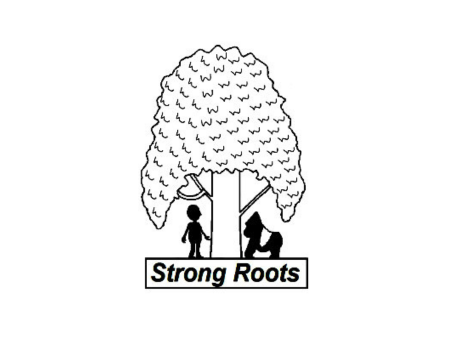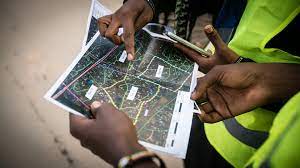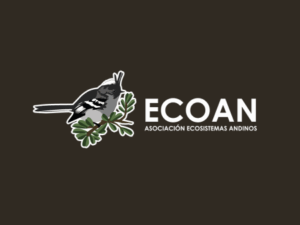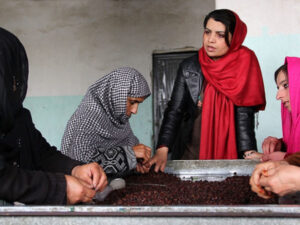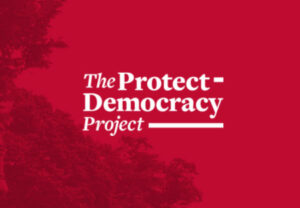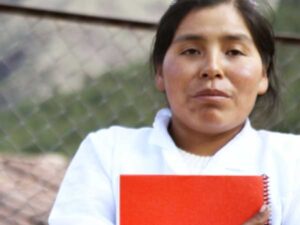Strong Roots Congo exists to empower communities in and around Kahuzi-Biega National Park, Itombwe Nature Reserve, and on the corridor linking both protected areas to conserve the biodiversity of this place.
Dominique Bikaba spoke with Ambika Samarthya-Howard on July 2, 2025. Click here to read the full conversation with insights highlighted.
Ambika Samarthya-Howard: Do you want to start by introducing yourself?
Dominique Bikaba: My name is Dominique Bikaba, and I work for Strong Roots Congo based in Bukavu, in the Eastern Democratic Republic of Congo (DRC).
Ambika Samarthya-Howard: You are the first person in this entire project who works on Indigenous people and with bioforestry.
Dominique Bikaba: We are working with local communities and Indigenous people on securing land tenure. We are targeting 1 million hectares of communal lands, traditional lands for local communities and Indigenous people. This block of forest is continuous and connects two existing protected areas. We’ve already secured 600,000 hectares legally, and we are now working on securing an additional 400,000 by 2028. We have everything in place; we just need a clear way for the government because Bukavu is currently invaded by rebels and the provincial institutions have fled the city.
When it comes to securing land, you have the government, you have the communities, and people supporting these entities.
Ambika Samarthya-Howard: When you say people supporting entities like yourself, do you consider yourself an intermediary or a nonprofit, or how do you identify?
Dominique Bikaba: We are members of the community, but Strong Roots is acting as a nonprofit to support this process, to have the capacity to tell the government what we need.
Ambika Samarthya-Howard: What community do you identify with?
Dominique Bikaba: The Bashi tribe.
Ambika Samarthya-Howard: You’ve achieved quite an amount already. Can you explain how you did that and what your advice would be for other people trying to do that work? Was it easy to get that?
Dominique Bikaba: No, it was not. When this concluded in 2022, the governor was signing the first 13 titles to communities and said, “Dominique Bikaba, I’ve done my part, do your part.” That’s when I felt the weight on my shoulders of ensuring that these forests are protected for the long term.
Strong Roots was created in 2009 and was previously based at Kahuzi-Biega National Park, a protected area created in 1937 as the forest reserve. It became a national park in 1970 and was extended 10 times its initial area (counting now 600,000 hectares) in 1975. When it became a national park, my community, my family and the Batwa Indigenous people were kicked out of our traditional land. We lost the right to live in a protected area.
We had the privilege, I call it privilege, of having relatives who lived already outside of this forest and who could welcome us on the land at the edge of that forest. And the Batwa Indigenous peoples didn’t have the same opportunity.My grandmother and other people are still entering the forest illegally and collecting resources, but if they were found, they could be arrested or shot. We created our first conservation organization with colleagues in 1992 to address the conflict between the park management and the surrounding communities and see how our communities could continue accessing resources.
In 2009, I created Strong Roots to halt great apes decline and support communities to secure their lands which are natural habitat for protected and endemic species such as the Eastern lowland gorilla. Given all the wars and everything happening in the Congo, the number of species declined dramatically. For example, the gorillas passed from 17,000 individuals to less than 4,000 between 1998 and 2016.
Ambika Samarthya-Howard: How does that relate to the war? Are you saying that people just killed the gorillas during the war?
Dominique Bikaba: When foreigners invade your land, they enter the country and don’t care about people or wildlife. Imagine they were shooting at gorillas for nothing. It was the first site worldwide where gorillas were habituated to human presence in 1972, the Kahuzi-Biega National Park.
If they could kill about 6 million people in Congo, what about gorillas? In 2009, I said, if we lose these gorillas, it’s going to be a pity for future generations because these specific species of gorillas are endemic to that region, and they live only in eastern DRC.
I was born and raised there. I was concerned because it’s the only pride of the region we had. When conservation NGOs come down there, the first idea is that people are destroying because they’re poor, they’re starving, and they don’t have food. They don’t understand the nuances of losing their land and the ongoing conflicts. I said it’s not just because people are poor, it’s many other things: social justice, and being kicked out of their traditional land without any compensation.
I wanted to integrate research into local conservation initiatives, so we could make decisions based on evidence. If we are supporting something in this region, let’s address the root problem. I set up Strong Roots Congo for these two reasons: extending conservation projects to non-protected forests, and integrating research into conservation, also understanding how community traditional knowledge and practices could be integrated in formal conservation approaches to contribute to species preservation.
Ambika Samarthya-Howard: What’s the difference between a protected forest and a non-protected forest? What are the protections?
Dominique Bikaba: The Kahuzi-Biega is a national park, and the government decided by law that no one was allowed to live there anymore. Non-protected forests are owned by communities. There are types of protected areas in DRC, including “nature reserves, and game reserves” with different status of protection versus “national park”. They’ve applied a lot of traditional knowledge and practices through their customary regulations to preserve those forests, but those knowledge and practices aren’t recognized anywhere.
The first step was to document the traditional knowledge and practices that communities have used for centuries to preserve the forest and species on their land. That included looking at all the taboos, traditional values, sacred sites, and the relevant customs they’ve put in place to preserve those forests.
Ambika Samarthya-Howard: Your organization specifically is giving land rights or working on land tenure for the non-protected forest?
Dominique Bikaba: Yes, we are supporting communities to have recognition of their rights to land. For the local communities and Indigenous peoples, so that they can have the right of governance and management of their traditional lands. Otherwise, the government can allocate these lands to a national park or mining concessions, and these people will be kicked out again.
We moved to this land and started working with the communities. The first thing we discovered was that this region is rich in biodiversity, including numerous endemic and protected species of plants and wildlife. Everybody thinks that communities are the ones destroying the forest because they’re poor, but how did they keep all these species on their land?
That was the typing question in my mind when going back to school. At the same time, biodiversity richness was also overlapped by richness in minerals. The communities are taken between the richness of biodiversity that can be allocated as a national park, and the possibility of a mining concession for respective companies. They didn’t have any secured tenure for their traditional lands.
Ambika Samarthya-Howard: Most of us who work in this sector know that there is biodiversity in these lands, a very strong land tenureship, and that these communities are doing an excellent job. I don’t see how that translates into economics.
Dominique Bikaba: Yes, I was going to get there. There was no legal basis that could give these communities the legal right to their land; the customary right is being violated by the government and extractive companies. Since 2010, we have been lobbying for a law that grants the right of governance management of the traditional lands to local communities and Indigenous people. This law was passed in 2014.
Our project is based on the law that communities have a land title for perpetuity. We told communities about the law and how everything done will be legal. We work with them now because there is a whole process of going through the participatory mapping, documenting the forest, ensuring that communities understand all of this, and the Free, Prior, and Informed Consent (FPIC) process.
They got the first titles of their community forests in 2022 and additional ones in 2024. That’s how we’ve secured these 600,000 hectares today. There are two main objectives for the government in granting these titles that contribute to the local economy and the well-being of the communities, and that they preserve the forest for future generations. The first is reducing poverty within communities. That’s legal, that’s in the law. The second is preserving the resources, the forests, the species, for the long term, for generations.
Ambika Samarthya-Howard: Why would this reduce poverty?
Dominique Bikaba: By sustainably using their forests, communities can use the natural resources economically to reduce their poverty in the village. For example, they are allowed to exploit some resources. They can also promote conservation activities to improve their livelihoods.
Ambika Samarthya-Howard: Why is the second objective hard?
Dominique Bikaba: Because the communities need to choose between poverty and losing the second option, and they go to exploit the forest and its animals. All the mining and exploitation activities are on the same land.
Ambika Samarthya-Howard: When a community gets land tenureship in a forest, that means that they can’t do mining there, right?
Dominique Bikaba: Technically, they shouldn’t. Before I left in January, I threw a question on the table in meetings in Kinshasa and Bukavu. We’ve been fighting against mining because mining is bad, which is true. I realized it’s going to be impossible to stop mining. If we don’t do that in the right way, they’re going to do that by war. All the wars happening in Congo are about accessing resources, like gold, coltan, tin, and uranium. In the western part of the corridor, 72% of the local economy comes from artisanal mining. You understand how important it is.
You know we don’t eat minerals, so it is to be exported outside the region. I proposed to sit down and think critically and find ways how mining can contribute to conservation. They said I was crazy and asked why I thought it was possible.
I realized that it’s going to be impossible to stop mining in one way or another. I looked at how many people we’ve lost, killed by rebels. Since the communities now have the title of their lands and the minerals, how are we going to use that?
In the simple management plan, a management plan for the community forest, we allocate several areas for several purposes, and we go through microzoning of the forest, deciding which side of the forest would be used for purely conservation, which for a sacred site, agriculture, collecting non-timber forest products, and so on.
By law now, no one can come into a community forest and exploit it. The law is about forest products. It doesn’t talk about the resources underneath, which are minerals. If it comes to discussing minerals, we need to approach the mining ministry. For the moment, we are dealing with the environment, the Ministry of the Environment.
In 2023 and ’24, we had a study with a number of researchers on the local market, and the biggest problem is the infrastructure. We’ve been supporting a lot of agriculture in these communities for food security, but as they were producing more crops, we thought about the market. What are we going to do with the extra?
The roads in Congo are bad or nonexistent, and bad people will have access to resources. It will increase poaching, logging and mining. When you have infrastructure and good governance, you can improve security because police, security officers, and even park rangers can easily access areas.
In the long run, it will stabilize the region in security and economically. We need infrastructure.
Most of the exports are minerals. We have little logging, probably because there are no roads. That’s an assumption. We have many flights going down into the forest for minerals. There are no cars, sometimes motorbikes can access some areas.
Ambika Samarthya-Howard: What products would you sell in the market?
Dominique Bikaba: Especially crops production, like corn, beans, palm oil, and rice. We’ve been working with the people in the villages in the forest, and they produce a lot without extending farms in the rainforest.
Unfortunately, what they cannot eat, they burn. That’s why infrastructure is key. We need to challenge these papers, the other researchers’ thinking that infrastructure will increase poaching and logging. We are enforcing governance because people in the villages will not accept that everything is just destroyed like that. We’ve been improving and supporting the good governance of natural resources.
We’ve been working with the government to ensure that they are accountable to the people and its policies. Having infrastructure today is different from what we thought before, when we didn’t have all these initiatives going on in this forest. There’s momentum to have actual infrastructure. It will improve the economy, and there will be resources coming out and going into the village.
For example, salt and clothes. People will be happy to drive to the village instead of walking for two days in the forest. It’s normal to go into the forest for research, for inventories, but not to go to a town.
Infrastructure is key for the economy and also for supporting communities to access good markets for their products. Not just for crop products, but also for forest products and other resources.
Ambika Samarthya-Howard: How do the Indigenous communities you work with feel about your work? Even the idea of owning your land is a very Western concept.
Dominique Bikaba: I love this question because this initiative didn’t come from us. We were called by the chiefdoms to support them in securing their land. They convinced us by saying they knew that we were working at the national park for conservation and working with the park’s surrounding communities. They knew they had a lot of species on their land, so the government could allocate that at any time to a national park.
They were also afraid of mining and extractive companies. They wanted to secure the land so that they could show that they protect the land. This project is championed by communities, leading every single process.
Surprisingly, the government also assures that everything is going well with the project. In January, the provincial government of South Kivu established a provincial institution to continue supporting these communities, in case we’re not there anymore.
The interest is going in a way that this forest can be preserved not just for 5 to 10 years, but for at least 25 to 50 years to come.
Ambika Samarthya-Howard: Do you feel like there’s conflict between the science and the traditional approaches?
Dominique Bikaba: I’d say conflicts between the local communities themselves and their elites. The people who left the village and went to the city are capturing the communities as their own and trying to manipulate them, but we found a solution for that. We ensured that we got sessions, meetings, and workshops with those elites in Bukavu, in other cities, to explain to them the project before they could make assumptions and allegations on the project.
Ambika Samarthya-Howard: That’s fantastic. Any time you’re preventative about that kind of stuff, it’s so important. If you do it reactively, I’ve never seen it work.
Dominique Bikaba: Even in Kinshasa, the central government, the ministry, and other people wonder how we were able to secure 600,000 hectares of forest in a region where the land is very competitive. By working with elites and working with the government at one side and ensuring the communities’ interest is secured.
We brought experts from the government in Kinshasa to come to South Kivu to train the provincial government officials and the traditional rulers about this law specifically, so that we had a common understanding of the legal process in preserving and securing this forest. Transparency was key, and engaging all key stakeholders together, including the elite and government officers.
We brought all the conventions the government signed and the engagements they’ve taken to protect communities and the Indigenous people, and the country’s policies and legal instruments, calling for accountability towards the local communities.
They found out how important it was, and it didn’t require them anything because we looked for all the means, they just provided the institutions, and their official support to signing land documents, ensuring that all due diligence requirements were observed. They are proudly engaged in the project and supporting communities.
Coming back to the question about traditional knowledge and science, you cannot imagine the amount of knowledge we found in these communities. I call it science as well; it’s the source of science. We found a few customs that were against “the modern” human rights and probably against “modern” science.
For example, my colleague, the head of the community forestry program, is a lady, Anastasia. She went far away to a village where I’ve never been. She’s braver than I. Arriving there, the people told her they couldn’t go to a meeting led by a woman. It’s against their customs. She had to travel two hours to go to a small mountain, where she could have a signal to call in Bukavu to reach out to me, saying the people refused to meet her and she was in trouble. [laughter]
I told her not to worry and that I would fix it. I told the people who were with her on the mountain to tell the guardians of customs that Anastasia is the only person in our organization who knows about community forestry. Even if I were to come there, I wouldn’t help you because I don’t know about it. If you want to secure your land, if you want this project to happen, you have to decide to work with Anastasia or ask her to come back to Bukavu, and she will go to another community.
We have, of course, more people who know about the project, but I wanted them to understand that knowledge is not for women or men. They took two days to deliberate in the village and then accepted Anastasia as chair of the meeting.
She told them it’s not just about chairing the meeting but also having women involved in forest governance and management because they’re the ones using a lot of resources, like wood, food, water, and land. We can’t make decisions about those resources without women being on board with the governance committees and management committees.
That community today is the model of gender-based governance management of the forest on this corridor.
Ambika Samarthya-Howard: Dominique Bikaba, are you surprised that you’re the first person I’m speaking to from DRC?
Dominique Bikaba: I am, but there are so many people in the DRC working on community forestry, probably.
Ambika Samarthya-Howard: Do you feel that the difference between the situation in DRC versus Indonesia or Brazil is more complex and marred because of the war?
Dominique Bikaba: First of all, our specific project, the Strong Roots project, is being used as a model because of all of the things I’m telling you; the engagement of people, of genders, of youth, all assuring that this happens.
In other countries, the government rejects the Indigenous people and local communities because they consider them annoying. In the DRC, we convinced the government that the local communities and Indigenous people are allies, not enemies. We have a responsibility, not just for the country, but globally. The DRC alone counts about 80% of the Congo Basin Forest. If the local communities and Indigenous peoples can preserve 1 million hectares for the next 50 years to come, you can imagine the impact on the climate.
Ambika Samarthya-Howard: Isn’t that similar to the situation in the Amazon?
Dominique Bikaba: Very similar, but Brazil’s big forest has been swamped with agricultural influence from China, livestock, beef, cows, those things. We still have agriculture affecting people. In our forest, it’s mostly mining that kicks out people.
The government plays a key role. If you avoid the government in the process, you’re going to fail. Bring them with their bad temper and everything, and transform them to be positive contributors to the initiative. That’s what we’ve done in Congo.
Ambika Samarthya-Howard: I had a few logistical questions. We’re trying to understand how intermediaries and people in the system relate to each other. You have a partnership with Nia Tero and Tenure Facility? What is the difference between a partnership and sponsorship?
Dominique Bikaba: We do. Good and difficult question. I’m on the advisory board of Nia Tero. They provide funding support to Strong Roots. When we talk about sponsors, we are looking at donors who have committed to the projects for more than one year. The Tenure Facility, for example, will work with us for the next five years. Other donors include the Good Energies, the International Conservation Funds of Canada, Arcus Foundation, etc.
The Packard Foundation, we’ve been working with them for maybe three, four years now. With the Rainforest Trust for five years now. This project has brought in strong partners. We are selective when it comes to partners. It’s not just money, but also respect for people and respect for our mission.
All our funders are people who not just provide financial support, but give you their heart as well, so you feel that you are being supported. You are dealing with people who have a big sense and respect to Indigenous peoples, their cultural values and their identity. We get big support from and strong partnership with the Forest Health Alliance based at Toronto University.
Ambika Samarthya-Howard: Thank you for your time.
Click here to read the full conversation with insights highlighted.
Ambika Samarthya-Howard (she/her) is the Solutions Journalism Network’s Chief Innovation Officer: She leads on innovation and technology, leverages communication platforms for the network strategy and creates cool content. She has an MFA from Columbia’s Film School and has been creating, teaching and writing at the intersection of storytelling and social good for two decades. She has produced content for Current TV, UNICEF, Havas, Praekelt.org, UNICEF, UNFPA, Save the Children, FCDO, Global Integrity and Prism.
* This interview has been edited and condensed.
Read about other social innovators.

